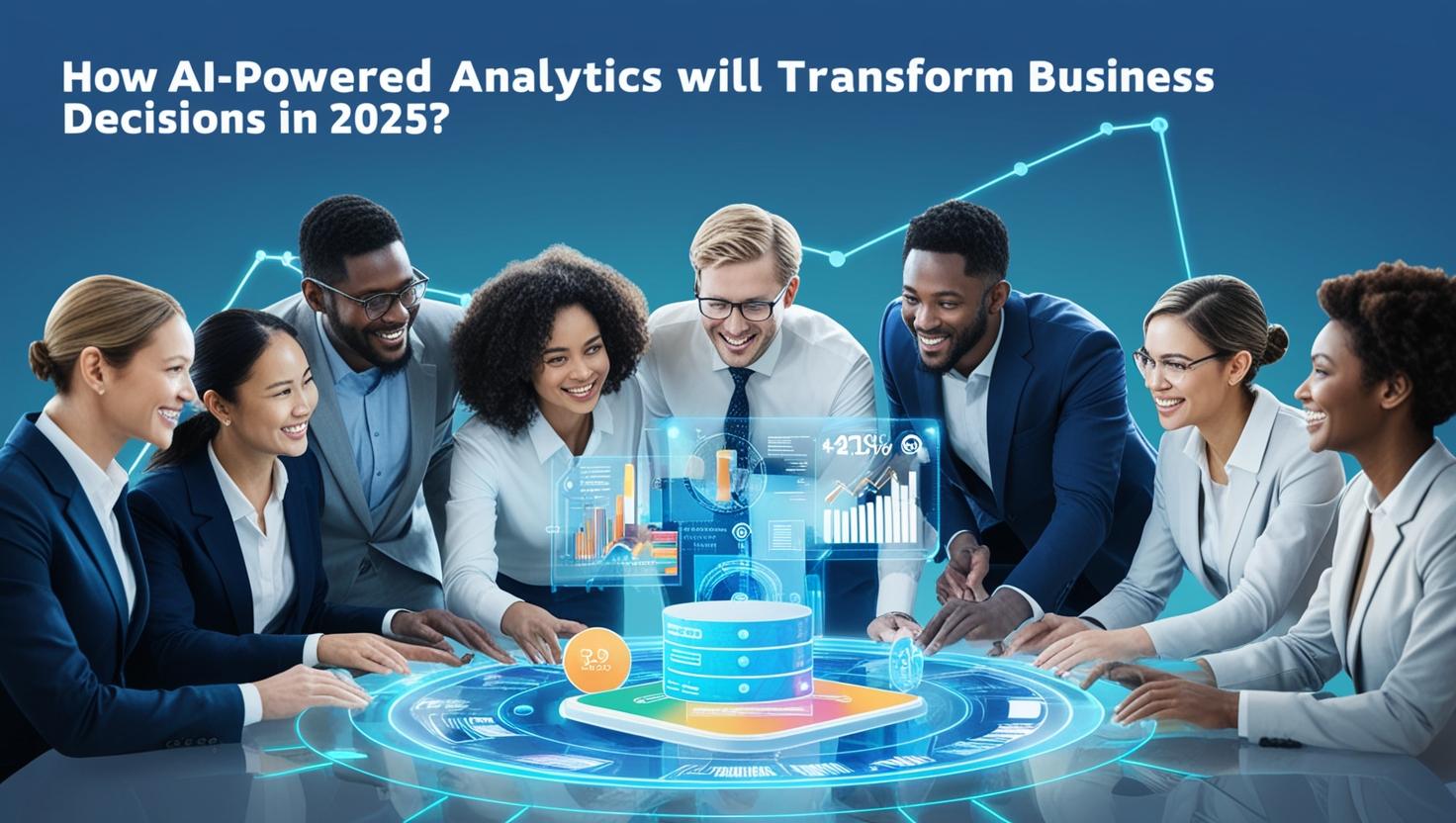Published: April 9, 2025
By: PatMacTech Team
In today’s fast-paced world, waiting days—or even hours—for insights from your data can mean missed opportunities, lost revenue, or falling behind the competition. Enter AI-driven data analytics: a game-changer that’s revolutionizing how businesses process massive datasets in real time to make faster, smarter decisions. As we move deeper into 2025, industries like ecommerce, healthcare, and finance are leading the charge, harnessing AI to turn raw data into actionable strategies at lightning speed. So, how exactly can AI-powered analytics transform your business decisions this year? Let’s dive in.
The Power of Real-Time Insights
Traditional analytics often involves batch processing—collecting data, running reports, and analyzing trends after the fact. While useful, this approach can’t keep up with the immediacy of today’s markets. AI changes that by crunching vast datasets instantly, spotting patterns, and delivering insights as events unfold. Whether it’s adjusting pricing during a sales surge or rerouting resources during a supply chain hiccup, real-time decision-making powered by AI is no longer a luxury—it’s a necessity.
Consider this: a recent study showed that companies using real-time analytics can improve decision-making speed by up to 30%. That’s the difference between reacting to a customer trend as it happens versus scrambling to catch up after it’s passed. With AI, you’re not just keeping pace—you’re staying ahead.
Use Case #1: Predictive Inventory Management in Ecommerce
Imagine you run an online store in Ghana, selling everything from fashion to electronics. During a holiday season like Christmas or Eid, demand can spike unpredictably. Without AI, you might overstock slow-moving items or run out of hot sellers, frustrating customers and hurting profits.
AI-powered analytics flips the script. By analyzing historical sales data, current market trends, and even social media buzz in real time, AI can predict which products will fly off the virtual shelves. For example, if it detects a surge in searches for “sneakers” in Accra, it can recommend increasing stock before the rush hits. The result? Optimized inventory, happier customers, and a healthier bottom line.
Use Case #2: Customer Behaviour Analysis in Finance
In the financial sector, understanding customer behavior is gold. Banks and fintechs in Ghana—like those offering mobile money or loans—are using AI to analyze transaction patterns instantly. Picture this: a customer suddenly increases spending on luxury goods. AI flags this in real time, cross-references it with their credit history, and suggests offering a tailored loan or credit card upgrade before they even ask.
This isn’t futuristic fiction—it’s happening now. AI-driven analytics empowers financial institutions to personalize offers, reduce risk, and boost customer loyalty, all within seconds of a transaction. In a competitive market, that speed can set you apart.
Use Case #3: Real-Time Diagnostics in Healthcare
Healthcare is another frontier where AI analytics shines. Hospitals and clinics are drowning in data—patient records, lab results, and appointment schedules. AI can sift through this in real time to support critical decisions. For instance, during a flu outbreak in Kumasi, AI could analyze patient symptoms as they’re logged, predict hotspots, and recommend resource allocation—like extra staff or vaccines—before the situation escalates.
This capability saves time, resources, and, most importantly, lives. It’s a vivid example of how AI turns data into a lifeline, not just a report.
Why It’s Trending in 2025
So, why is AI-driven analytics taking center stage now? Three big reasons:
- Data Explosion: Businesses are generating more data than ever—think IoT devices, online transactions, and social interactions. AI is the only tool fast enough to handle it.
- Tech Advancements: Improved machine learning models and cloud computing (e.g., AWS, Azure) make real-time processing scalable and affordable.
- Competitive Pressure: In ecommerce, finance, and healthcare, those who act first win. AI gives you that edge.
Challenges to Watch
It’s not all smooth sailing. Implementing AI analytics requires clean data (garbage in, garbage out), skilled teams to manage it, and robust infrastructure. Privacy is another hurdle—regulations like Ghana’s Data Protection Act, 2012 demand secure handling of personal info. But with the right strategy, these are obstacles you can overcome.
How to Get Started
Ready to bring AI-powered analytics to your business? Here’s a quick roadmap:
- Assess Your Data: Identify key datasets (sales, customer interactions, etc.) that could benefit from real-time insights.
- Choose the Right Tools: Platforms like TensorFlow, Power BI with AI integrations, or custom solutions can kick things off.
- Start Small: Pilot a use case—like inventory prediction—before scaling up.
- Partner Up: Work with experts who can tailor AI to your needs and ensure compliance.
Elevate Your Business with PMT HRFlow
At the heart of any successful AI analytics strategy is people—your team needs to be aligned, efficient, and ready to act on those insights. That’s where PMT HRFlow comes in. Our cutting-edge HR management solution streamlines workforce operations, from attendance tracking to performance analytics, giving you the human foundation to leverage AI effectively. Whether it’s real-time staff scheduling for a retail rush or data-driven insights for healthcare staffing, PMT HRFlow integrates seamlessly with your analytics stack.
Ready to transform your decisions in 2025? Contact us today at sales@patmactechuk.net or visit www.pmthrflow.com to see how PMT HRFlow can power your AI-driven future.

Leave a Reply